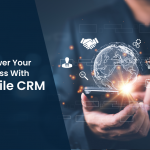Choosing the right ERP solution can be a game-changer for your business, and the Acumatica vs NetSuite debate is at the forefront of this decision. When you dive into our analysis, you’ll get to grips with how each platform’s implementation process either opens doors or sets limits for customization. We’re talking hard facts on pricing models too—understand how user fees and resource consumption could hit your wallet with NetSuite or why Acumatica’s approach might just shield you from those budget-busting surprises.
Your takeaway? A clear-cut understanding of which cloud ERP stands up to its promises in customer support and satisfaction. Plus, we’ve got insights on deployment options that fit today’s fast-paced business environments, as well as a peek at the market presence where these software giants clash head-on. It’s not just about features—it’s about finding an ally in growth – that’s where Confianz comes in.
Implementation Process and Customization Capabilities
Acumatica’s Tailored Implementation Approach
The essence of Acumatica’s approach to implementation is customization. Businesses seeking an ERP solution often look for a system that adapts to their unique processes, not the other way around. Acumatica offers this flexibility through its discovery phase which aims at understanding each business’s specific needs. This initial step helps in creating a personalized setup that can integrate seamlessly with existing operations.
With a focus on providing tailored implementation services, Acumatica enables businesses to mold the software according to their workflow rather than adjusting workflows to suit the software constraints. The availability of extensive customization options plays into this strategy effectively, allowing companies across various industries – from manufacturing construction to beverage production – freedom in sculpting an ERP environment crafted specifically for them.
A notable aspect of Acumatica’s service offering includes integration capabilities with other software systems already in use by organizations such as Microsoft Office and core HR platforms. It opens up possibilities for smoother transitions during deployment phases while ensuring all aspects of resource management are well-aligned within one comprehensive ecosystem.
NetSuite’s SuiteSuccess Strategy
In contrast, stands NetSuite’s structured deployment method known as SuiteSuccess. This proprietary methodology leverages Oracle NetSuite’s years of industry experience to deliver rapid deployments designed for immediate business impact. By drawing on best practices gathered from thousands of successful implementations, it provides pre-configured KPIs and role-specific dashboards tailored per sector requirements which translates into faster time-to-value compared against traditional methods.
The crux here lies within how SuiteSuccess staged methodology cuts down lengthy consultations thereby enabling fast-growing companies quick access data insights critical for scaling efficiently and responsibly under evolving market demands. Yet despite these advantages some users report limitations when it comes to integrating third-party applications with Netsuite—this is where your decision may hinge depending upon your company’s reliance on specialized external tools beyond standard ERP offerings like general ledger or accounts receivable modules.
To support expansion plans or more complex enterprise resource planning initiatives, such as intercompany accounting or fixed assets tracking, it is crucial to prioritize understanding the level of modification supported without compromising product maturity during the vendor selection process. This is especially important as future-proofing investments remain a key priority for organizations today. Therefore, comprehending these nuances becomes essential before allocating any resources to either platform. This ultimately involves aligning expectations realistically regarding the distinct paths each provider takes toward achieving operational excellence post-deployment.
Consequently, it is vital to conduct thorough research and comprehend exactly what is involved with each option. By doing so, you ensure that the final result aligns with your initial vision. Choosing the right technology is fundamentally about making informed decisions that withstand the test of time.
Pricing Structures and Cost Considerations
Understanding NetSuite’s User-Based Pricing Model
When businesses look into Oracle NetSuite, they often find that its pricing models revolve around user-based licensing fees. This means companies pay per seat, making it a direct function of how many users will access the system. The implication here is straightforward: as your team grows, so does your investment in ERP software. Fast-growing companies need to factor this in since scaling up can significantly increase costs.
This model offers clarity because each additional user has a set cost attached, yet it also poses limitations for smaller enterprises or those with fluctuating staff numbers. Businesses need to be aware of these dynamics when evaluating their ERP needs against budget constraints and plan accordingly.
Acumatica’s Unique Consumption-Based Pricing Approach
Differentiating itself from traditional models like Netsuite’s, Acumatica adopts a consumption-based pricing approach where charges are based on the resources used instead of per-user fees. This innovative strategy allows unlimited users while focusing on the actual use of computing power, data storage, and transaction volumes within your enterprise resource planning systems.
The advantage here is clear: you get more flexibility without worrying about every new hire bumping up your software expenses. As such, small but high-transaction volume businesses might find Acumatica’s offer particularly attractive—allowing them to leverage full cloud ERP capabilities without disproportionate costs tied solely to headcount growth.
In the current market landscape, where customer trust relies on transparency and fairness, Confianz ensures that clients are equipped with robust safeguards against unforeseen rises in operational expenditures resulting from alterations in pricing policies or concealed costs. This commitment is integral to what we believe should form the foundation of a trusted provider-client relationship.
Licensing costs remain an important consideration during decision-making processes for business leaders contemplating ERP solutions. Whether opting for NetSuite or considering alternatives like Acumatica must involve a thorough analysis of long-term financial implications that could impact overall business health—the key being no surprises down the line as one scales operations or evolves services offered.
- A thorough exploration of NetSuite shows it offers various service levels for different business sizes and sectors. Start-ups to global corporations can find a tier that fits their needs, whether they’re in beverage manufacturing, retail, fashion, or other industries.
Customer Support and Satisfaction Ratings
Evaluating NetSuite’s Customer Service Reputation
When it comes to customer support services, a vendor’s reputation is crucial. For Oracle NetSuite, the spotlight shines on their commitment to client assistance post-implementation. Users need to have access to reliable help after they’ve fully integrated an ERP system into their business processes. The effectiveness of this support can significantly impact customer satisfaction ratings.
The company has structured its client service around user needs, providing a variety of resources designed to address issues swiftly and efficiently. These include extensive knowledge bases, dedicated sales teams trained in specific industry nuances, and tailored solutions aimed at fast-growing companies. While claims about NetSuite’s approach are promising, potential clients should seek out authentic feedback from current Netsuite customers who interact with these services daily.
A robust metric that underscores the importance of strong customer relations is found in training opportunities provided by vendors; here we see that NetSuite makes strides with free online training programs available for users seeking self-sufficiency—a critical component fostering independence among clientele.
The Acumatica Advantage in Customer Relations
Shifting focus towards Acumatica offers us insight into how another major player approaches resource management within ERP solutions—their aim being leadership in customer satisfaction through comprehensive support structures. Aspects like human resources management become less daunting when paired with responsive back-end help systems such as those offered by Acumatica Support Services.
An intriguing facet underpinning the high level of care shown by Acumatica lies within their Bill of Rights—a pledge guaranteeing certain standards for every client interaction which helps bolster overall trust between provider and consumer alike. This dedication extends beyond mere words; there exists concrete evidence reflecting this ethos through notable initiatives like extensive project accounting tools catered toward simplifying complex tasks or detailed product maturity roadmaps guiding businesses throughout each stage of growth.
Building strong relationships often requires exceeding standard expectations. Acumatica exemplifies this by not only ensuring availability but also emphasizing quality in deployment options. These options span from core financials to addressing cloud accessibility concerns. These considerations play pivotal roles in maintaining operational harmony across diverse environments, be it in manufacturing, construction sectors, or beverage production industries where precision is paramount in day-to-day activities.
This commitment to a solid enterprise resource planning foundation, established early during implementation phases, acts as a safeguard against potential future discrepancies. It contributes directly to improved customer satisfaction ratings over time. This improvement is based on genuine user experiences systematically gathered and acted upon. The strategies evolve continually, aiming for higher benchmarks, and are centered around delivering value first. The clear path ahead is navigated by seasoned professionals who back up promises made upfront with steadfast reliability. This reliability remains unwavering, ready to tackle challenges head-on without hesitation, recognizing the significance of doing so.
Deployment Options and Cloud Accessibility
Acumatica’s Tailored Implementation Approach
When it comes to deployment options, Acumatica stands out with its flexible approach. It offers a variety of choices tailored to the specific needs of businesses, allowing them to select from on-premises, hosted, or cloud-based ERP deployments. This flexibility caters not only to current business requirements but also accommodates future growth and changes in IT strategy.
The platform is renowned for its comprehensive mobile accessibility features that empower users on the go. Whether employees are working remotely or need real-time access to data while visiting clients or managing fieldwork, Acumatica’s responsive design ensures full functionality across devices—a critical advantage in today’s increasingly mobile workforce.
This adaptability extends beyond mere access; Acumatica allows for personalized dashboards and applications optimized for each user’s role within the company—demonstrating an understanding that modern business happens everywhere, not just behind a desk.
NetSuite’s SuiteSuccess Strategy
Moving over to Oracle NetSuite reveals another facet of cloud ERP solutions. With their proprietary SuiteSuccess strategy, they’ve streamlined the process by which fast-growing companies can start reaping benefits almost immediately after implementation. This structured methodology is aimed at rapid deployment and reducing time-to-value through industry-specific best practices baked into the system right from day one.
Netsuite serves up a seamless experience when accessing data via the cloud thanks largely to Oracle Cloud infrastructure—a hallmark signifying robustness and reliability associated with enterprise resource planning systems designed for scale. Their focus includes providing efficient resource management capabilities as well as sophisticated order management inventory management tools vital for any sizeable operation looking towards optimizing operations across various channels.
The crux lies in mobility: Netsuite customers enjoy extensive support services geared toward ensuring uninterrupted productivity regardless of location—imperative given our dynamic work environments where decision-making often takes place outside traditional office spaces.
User Model Flexibility:
- A fundamental difference between these two SaaS ERP giants is how they treat user models: While NetSuite operates under a more traditional per-user licensing model…
- In contrast, Acumatica’s unique consumption-based pricing scheme lets unlimited users utilize the system without additional costs—translating into potentially massive savings especially pertinent if you’re envisioning scaling your employee count rapidly without being penalized financially per headcount increase.
Human Resources Management (HRM) & Payroll Integration:
Both platforms offer substantial human resources management functionalities integrated directly. They streamline processes and make it easier for businesses to manage their workforce effectively. With these tools, companies can better plan their HR activities, from recruitment to retirement.
Conclusion
So you’ve navigated the ERP landscape. Acumatica vs NetSuite, it’s been a showdown of features and flexibilities. Remember, your business size doesn’t dictate your ERP power.
Keep in mind: NetSuite shines with user-based pricing but watch those costs as users add up. Acumatica plays it cool with consumption-based rates, potentially easing budget strain for growing businesses.
Dig into customization; while NetSuite streamlines via SuiteSuccess, Acumatica tailors to your company’s beat. Don’t overlook support services—Acumatica’s customer-centric approach could sway your decision.
Weigh deployment options carefully; cloud accessibility is king in our mobile world. These insights are just the tip of the iceberg when choosing an ally for growth. Don’t choose your own –Partner with Confianz.








